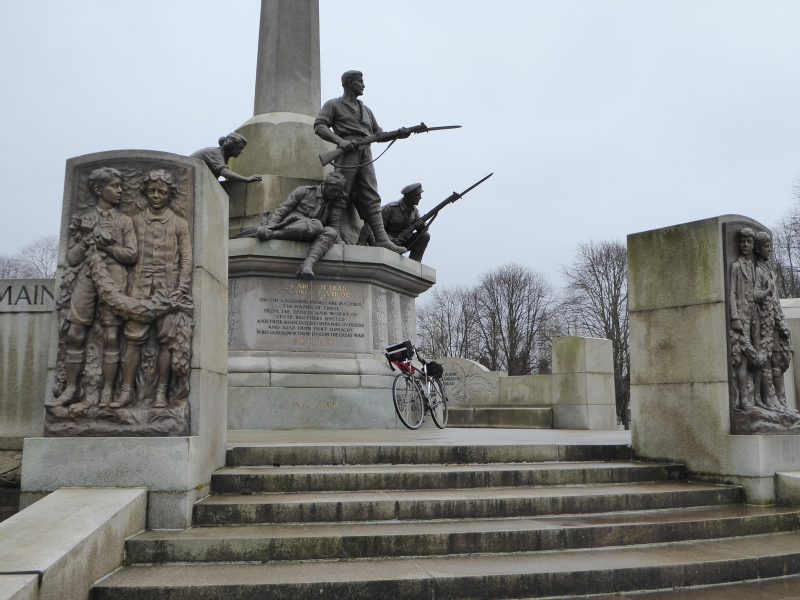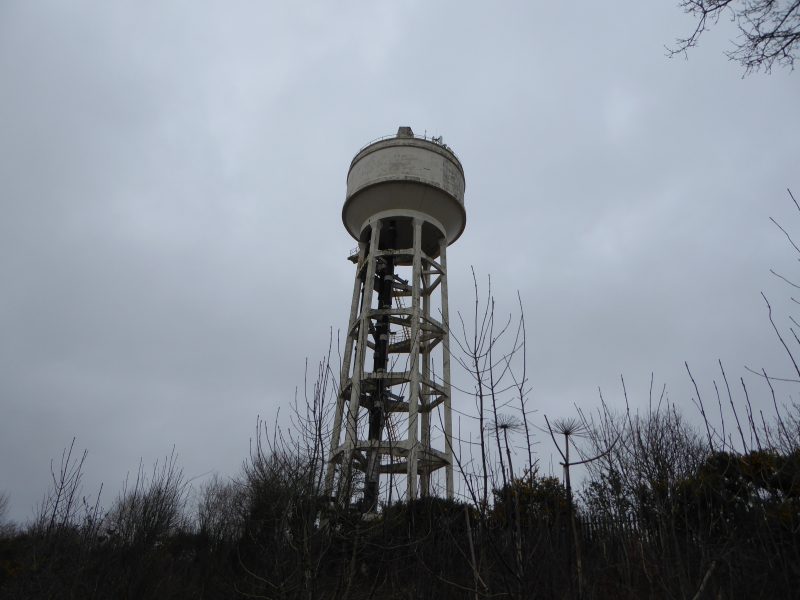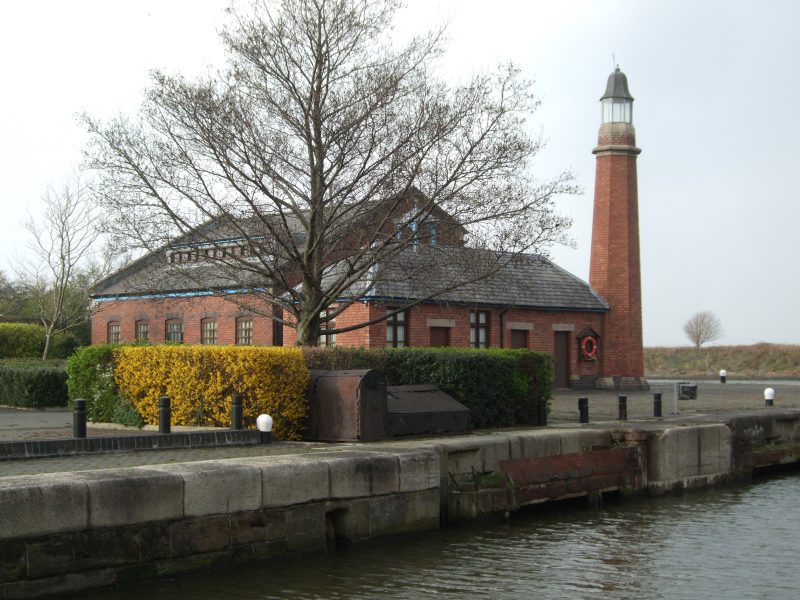
Cycling UK, runs a challenge based around a comprehensive list of 402 destinations. British Cycle Quest is a nationwide treasure hunt with the objective to visit as many locations as possible. To provide evidence that you have visited each site you need to answer a simple question about each one. The only real stipulation is that you must visit each place by bike. Start it today and you could take part in this for the rest of your life. The destinations listed, provide an endless reason to explore new roads. The garden village at Port Sunlight is one of the closest locations to my home, and its question can only be answered by a visit to the village’s magnificent war memorial.
Port Sunlight is only twelve miles away, but the A41, the road that provides my most direct route is busy and cycling along that stretch of road brings no pleasure at all. In this part of England, the best cycle routes are seldom provided by ‘A’ roads.
When I’m cycling, I prefer to have an objective in mind. Fortunately, the UK is full of destinations and even rides over moderate distances can still yield surprises. Britain has an abundance of roads, so there are often alternative routes to discover. These days I seldom find roads close to home that I’ve not ridden before, so when I do come across one it makes a welcome change.
Heavy cloud was forecast when I set off to find an alternative route to Port Sunlight. I have usually approached it from the west in the past, so approaching it from the side of the river Mersey would provide both a change of scenery and a challenge. Both Chester’s and Wirral’s local authorities provide alternative routes for cyclists and support them with excellent leaflets and maps. Alongside these I have the established routes provided by the Sustrans National and Regional Cycle Network. With these I was able to plan a route beforehand that ran north-east of the M53 and parallel to the Manchester Ship Canal and the Mersey. This included a stretch from the Boat Museum at Ellesmere Port, behind the Vauxhall car plant and through to Eastham Country Park, a four mile stretch of industrial road with no views of either the Mersey or the Manchester Ship Canal.

The North Road out of Ellesmere Port services the industrial areas north of the town. It’s quiet most of the day with the exception of shift change times. It’s a wide unattractive road and as I cycled along it I was reacquainted with the smells of oil and heavy industry that reminded me very much of the days when I worked at Shotton steelworks. This isn’t a road for cyclists or tourists, but on that day, it suited my purpose because it provided the most convenient route from A to B. When the M53 was constructed, in 1975, the North Road was sliced into two sections, but fortunately someone had the foresight to put a subway under the motorway that linked the two pieces of road making the original route still accessible to pedestrians and cyclists. Despite it only being within 15 miles from my home, I’d never used this road before.

Significant landmarks on my journey included the Whitby Lighthouse and the water tower that formerly belonged to the Bowater paper mill, this is a notable feature of the local skyline. After passing through the industrial landscape of Port Sunlight, I crossed the busy A41 and entered the garden village. For the east side of the Wirral, this remains a haven of peace and tranquillity, the roads are wider, quieter, and the atmosphere seems a world away from the industrial and overcrowded stressful Britain that many of us have become acquainted with. If only today’s planners and developers tried to emulate this more, I feel that we would be a lot happier as a nation. The interesting thing about Port Sunlight’s Garden Village is that it was built by one of Britain’s great industrialists.
William Hesketh Lever, considered the building and design of his village as more of a business model than a philanthropic gesture. He saw it as a way of sharing his company profits with his employees by providing decent, affordable housing with schools and amenities. His intention was to inspire loyalty and commitment from his work force. This was seen as revolutionary at the time and more than a hundred years on, it still looks good.
I made my note of the inscription on the war memorial and then headed back home. Returning the same way helped me to appreciate the route from a different perspective. My journey through north Cheshire and south-east Wirral included pastoral farmland, canal side tranquillity, derelict industrial sites, modern industrial estates and a country park with views across the estuary to Liverpool. And I have all this rural, industrial and social heritage, within 15 miles of home.